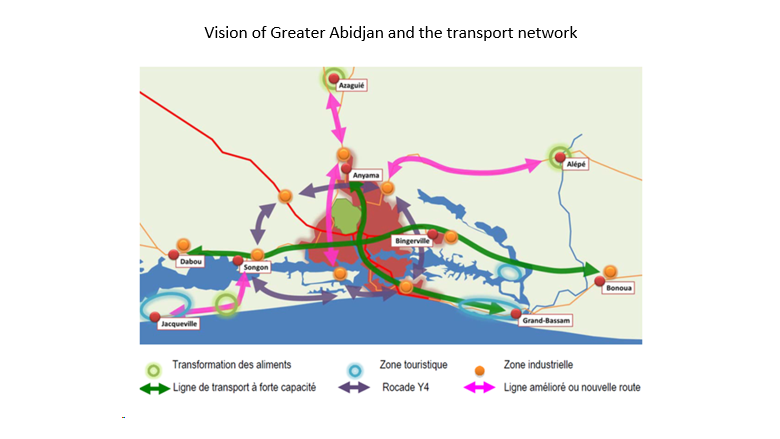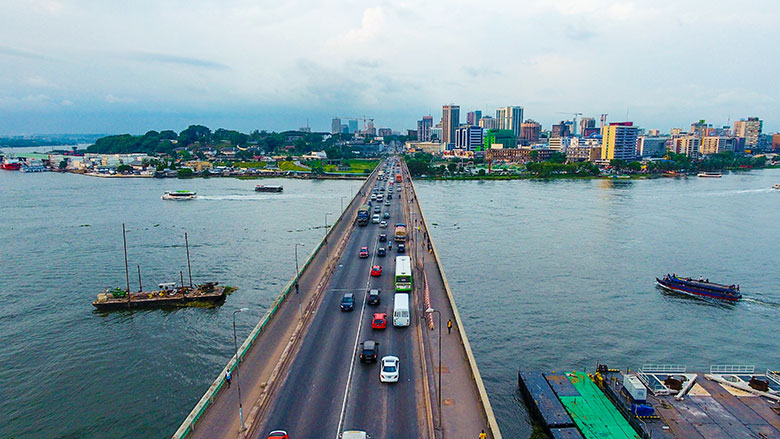One of the best performing economies on the continent
Most of the world’s ministers of Economy and Finance would welcome the key macroeconomic results recently posted by Côte d’Ivoire. The World Bank’s latest Economic Update for Côte d’Ivoire notes that, for the seventh consecutive year, growth is projected to surpass the 7% mark to reach 7.4% in 2018. Real per capita GDP grew by 32% over the same period. At this pace, Côte d’Ivoire could become a middle-income country in about 15 years, provided it promotes a more inclusive economy and controls rapid urbanization.
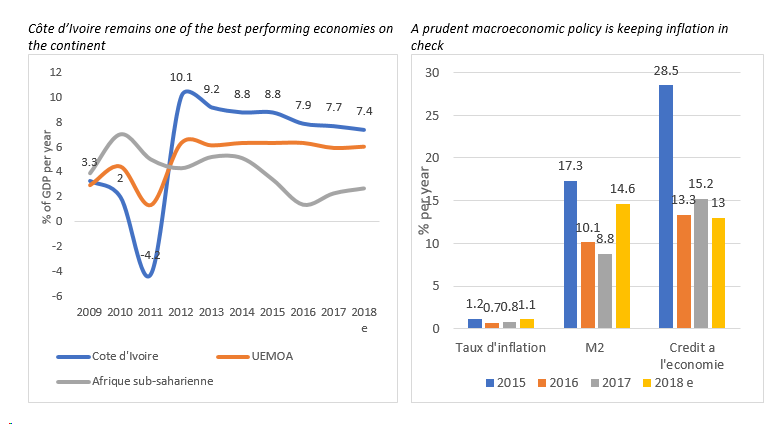
Non-inclusive growth
A country’s economic growth must be well redistributed if it is to be sustainable in the long run. Although the most recent statistical data on poverty (2015)[1] show that domestic revenue increased by 80% between 2012 and 2015 and that poverty is falling in Côte d’Ivoire for the first time in 40 years, this reduction has been small (from 51% to 46.3%), as the number of poor Ivorians is the same as in 2008 (roughly 10.7 million). In 2015, close to 46% of Ivorians still lived on less than CFAF 750 a day (approximately $1.30).
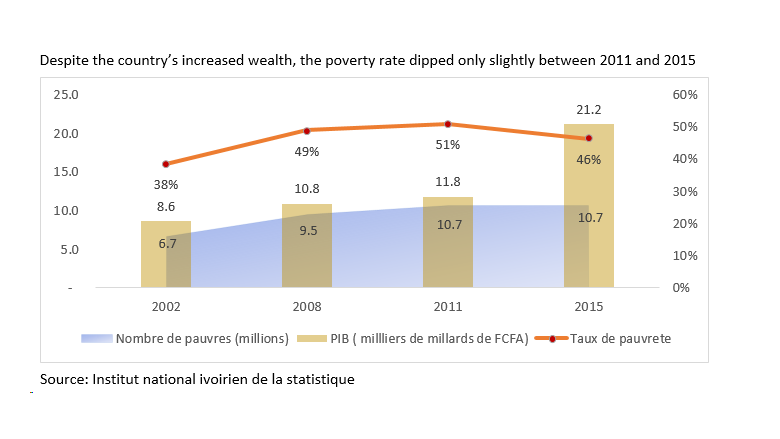
The country is grappling with economic and geographical inequalities. While there are more poor people in rural than in urban areas—56.8% versus 35.9% (of whom 22.7% are in Abidjan)—this gap has been narrowing over time. Between 2008 and 2015, the poverty rate in rural areas fell by 5.7% and increased by 6.4% in urban centers. In addition, the northern and northwestern regions of the country have higher poverty rates (over 60%) than coastal areas and the southwestern region (under 40%).
Rapidly urbanizing the country could accelerate development
As is the case in most countries around the world—and at a much faster clip than in the average Sub-Saharan country—cities are expanding at breakneck speed in Côte d’Ivoire. The rate of urbanization soared from 17.7% in 1960 to over 50% in 2018. Among African nations with over 5 million people, Côte d’Ivoire is the third most urbanized country, behind Cameroon and Ghana.
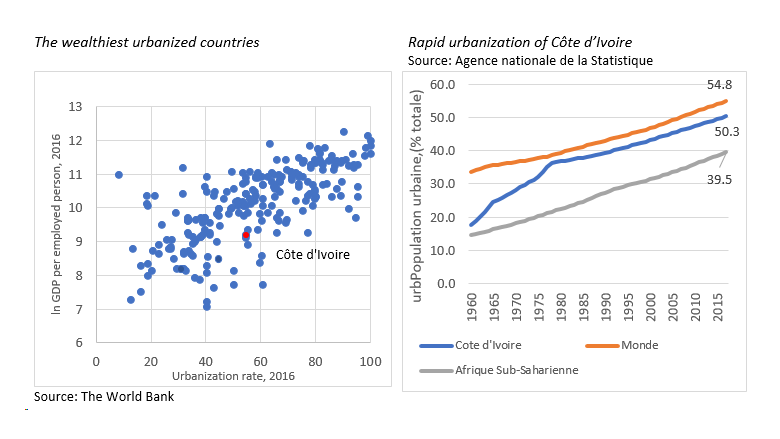
By helping enterprises be more productive and providing households with more job opportunities, schools for their children, and better health care than in rural areas, controlled urbanization could have a beneficial impact and foster a more inclusive economy. Urban residents in Côte d’Ivoire are currently grappling with a host of challenges, especially with respect to transportation.
Abidjan spends CFAF 4 billion on transport each day
On a daily basis, more than 10 million trips are made to Abidjan and each household spends on average CFAF 1,075 and loses more than three hours in commuting time. In other words, more than CFAF 4 billion (roughly $6.9 million) is spent each day (in terms of money and opportunity cost)—the equivalent of CFAF 1,200 billion each year (about $2.4 billion). This expenditure ranks third in household budgets (after food and housing), accounting for roughly 5% of national GDP in 2017.
Residents in outlying neighborhoods are most adversely affected because their trips are longer (78 minutes per trip compared to an average of 33 minutes). Total transport costs can account for up to 30% of the income of poor households and a mere 5% of the budgets of the wealthiest households.
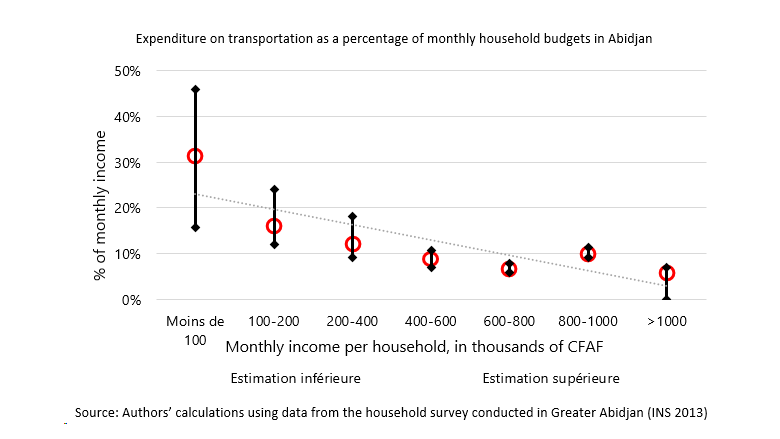
Infrastructure is unequally distributed and poorly diversified
These mobility challenges in Abidjan are due in part to the deficient transport infrastructure that is unevenly distributed across the country and deteriorates rapidly. They are also attributable to the virtual absence of public transport and the mushrooming of informal modes of transport that cannot remedy this problem as they are more unsafe and increase pollution. Fewer than one in ten trips is via public transport—approximately four times less than in a city of comparable size in Europe.
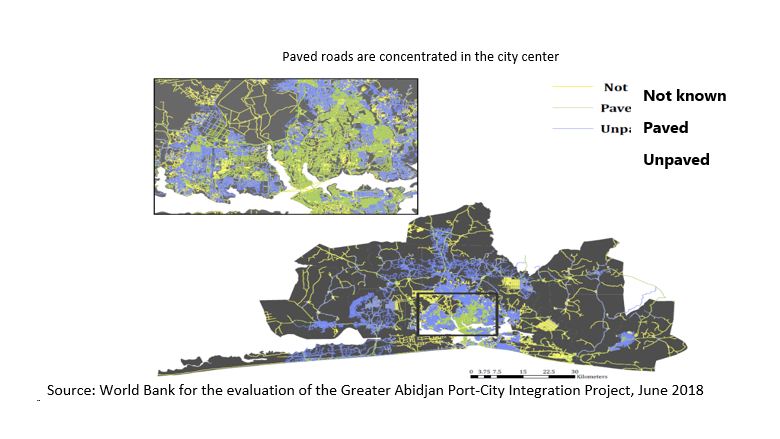
Three approaches to improve urban mobility
First, a coherent urban transport vision and an institutional framework that involves all mobility stakeholders must be defined if the Greater Abidjan project adopted in 2016 is to be successful. The second approach targets better integration of the transport system, with a view to offering several transport options to get around the city, by improving mass transit along the main corridors and developing neighborhood transport networks. The final approach involves the use of new technologies that would facilitate travel and improve management of the flow of persons and goods.
